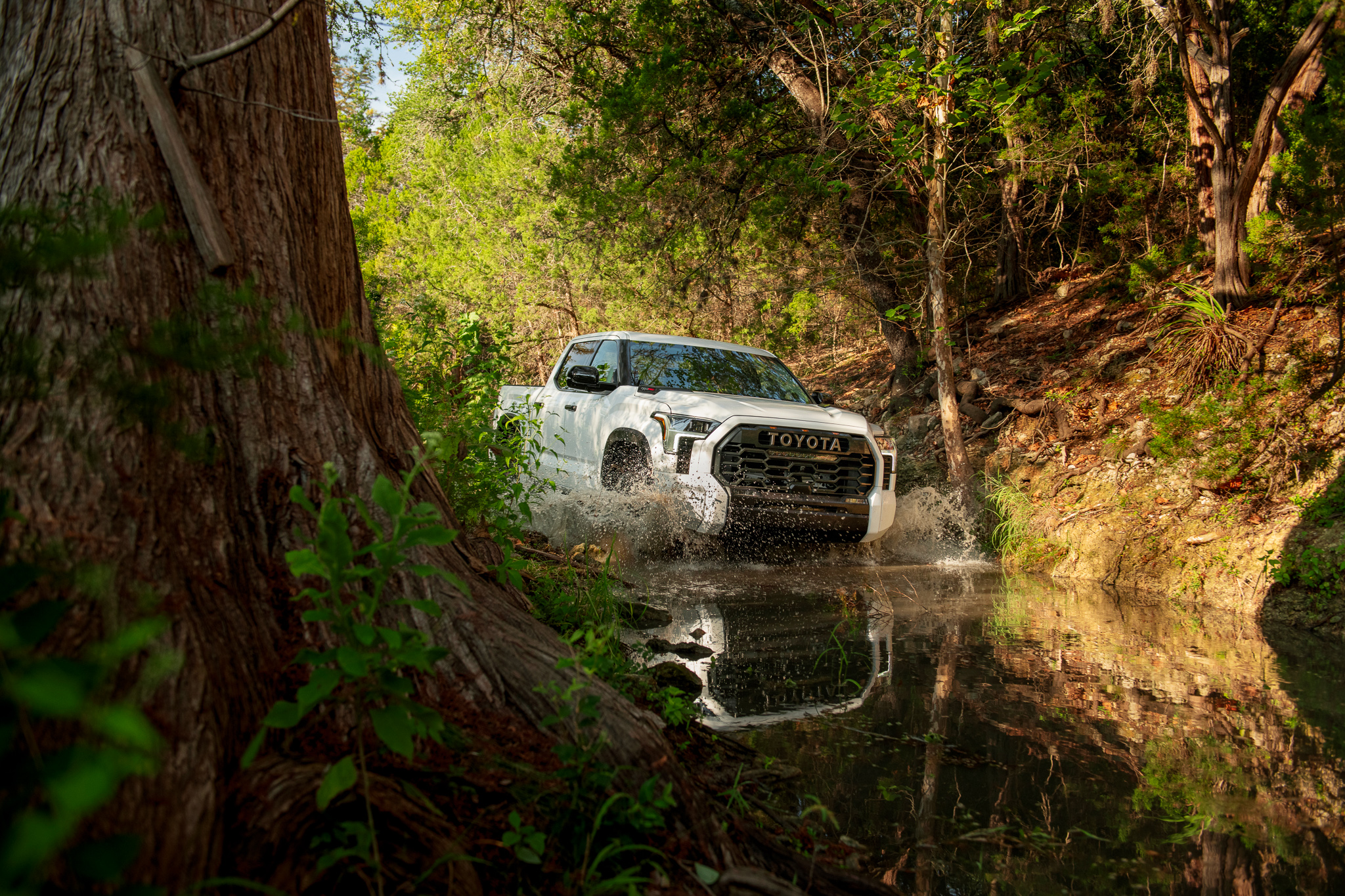Toyota Tundra SR5 TRD and TRD PRO
PAYLOAD, 1885 (SR5) and 1,600 (TRD PRO) | $Pricing Not Finalized
The newest Tundra has the heart and bones of a Land Cruiser
Toyota trucks are legendary for their Quality, Durability, and Reliability, with Tundras of every variant achieving million-mile service lives. The 2000-2006 model was one of my favorites, notable for its 7/8th full-size dimensions and nearly indestructible 4.7 liter V8. The launch of the 2000 Tundra was the most successful in new vehicle debut in Toyota history with over 100,000 units sold. For the 2022 model year, Toyota has released an all new Tundra to compete in the half-ton market, designed to be their most capable and overland-ready offering yet.
This newest Tundra has several important changes, including a chassis and engine shared with the new 300 Series Land Cruiser. The frame is fully boxed and precision reinforced to improve strength by 20 percent, while also reducing weight by 10 percent. The frame change also allowed converting from a leaf suspension to a five-link coil-sprung system (some models have optional air springs). The 3.5 liter V6 hybrid features twin-turbos and an inline electric motor/generator/starter that adds over 100 lb. ft. of torque, making a combined 583 lb. ft. at only 2,400 RPMs.
Key Features:
– F1 Chassis Shared with 300 Series Land Cruiser (and Sequoia to follow)
– Available 437 hp and 583 lb. ft iForce Twin Turbo V6 shared with Land Cruiser 300
– 10-speed Automatic with 4.92:1 First Gear
– 5-Link Coil Sprung Rear Suspension
– Locking Rear Differential
– Available Crawl Control
– Available factory designed and dealer installed 3″ Suspension Lift (will fit 35″ tires without cutting)
– 22 MPG Highway Fuel Economy
– 1,885 Pound Payload Available on SR5 TRD 4WD
– Significant Improvements to On-Road Ride and Handling
– Available CrewMax with 6.5 Foot Bed
– Massive 14″ Display Runs GAIA GPS and other Apple Car Play Enabled Mapping APPs
While the model offerings seem simple on the surface, the Tundra needs to be equipped in a specific way to optimize capacity and capability. For example, the SR5 can be fitted with the TRD package (which includes a rear locker) and retain up to an 1,885 pound payload. The most capable model, the TRD Pro has a payload set 285 pounds lighter at 1,600 pounds. If the goal is to install a lightweight camper, then the SR5 is key.
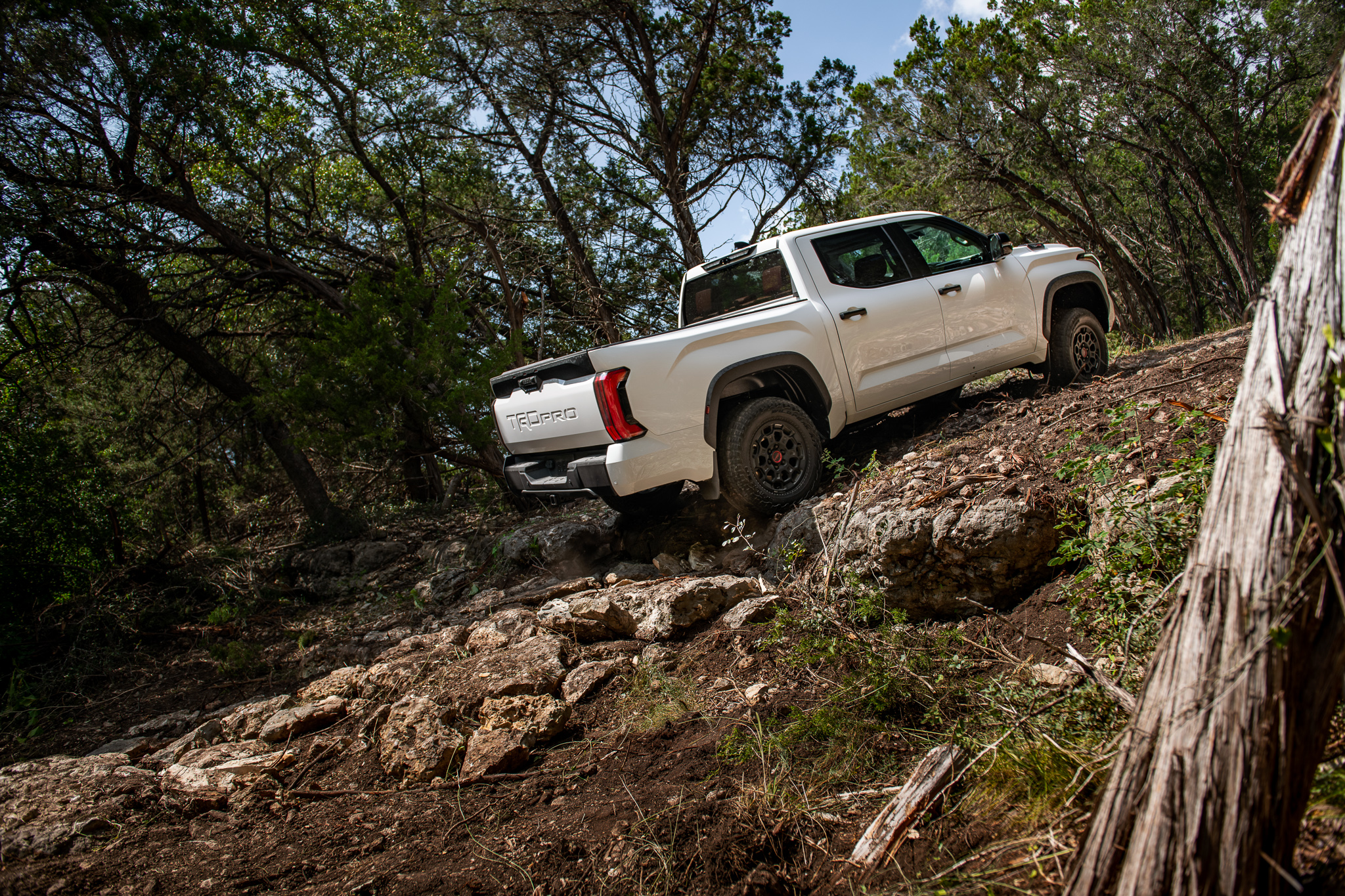 On the trail, the improved capability of the newest Tundra is immediately noticeable, and for reasons both obvious and veiled. One of the significant issues with the outgoing model was the lack of a rear locker, but also the aggressive tip-in of the accelerator, making it a wheelspin king. Now, the SR5 can be equipped with the TRD package that includes a driver-selectable rear locking differential, but almost as important, it provides multi-terrain select, which has a rock crawling mode (in low range) that softens throttle responsiveness and also significantly improves traction control effectiveness. The improvement to technical terrain competence cannot be overstated.
On the trail, the improved capability of the newest Tundra is immediately noticeable, and for reasons both obvious and veiled. One of the significant issues with the outgoing model was the lack of a rear locker, but also the aggressive tip-in of the accelerator, making it a wheelspin king. Now, the SR5 can be equipped with the TRD package that includes a driver-selectable rear locking differential, but almost as important, it provides multi-terrain select, which has a rock crawling mode (in low range) that softens throttle responsiveness and also significantly improves traction control effectiveness. The improvement to technical terrain competence cannot be overstated.
The one area we noted reduced capability was with articulation, which is surprising with the coil sprung rear suspension. The reason for this is directly related to available shock length and shock position, as droop is limited by the damper stroke. The rear frame and shock positioning was designed to optimize high-speed stability and trailer / load towing control. With the shocks outboard of the frame, there is only so much space and packaging available to accommodate shock length. The further outboard the shock, the longer it needs to be to maximize articulation. This will not be difficult to address in the aftermarket.
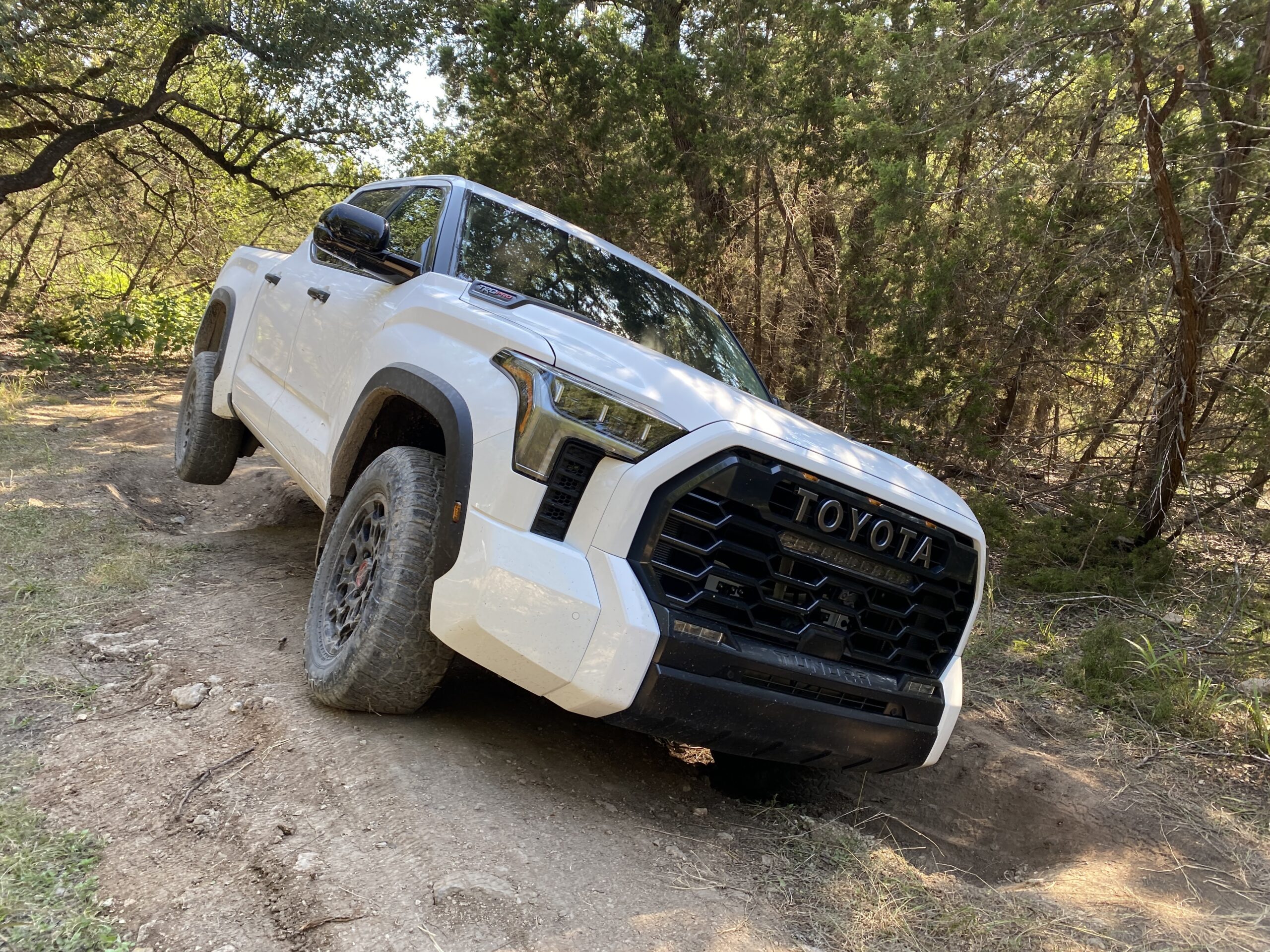
Toyota also announced an available three-inch factory developed and dealer installed lift kit, which will permit a factory-recommended 35-inch tall tire. One of the challenges of the outgoing Tundra model was the compact front wheel wells and position of the body mount. This has all been addressed on the new chassis, with the body mount moved rearward several inches. There is still a wheel splitter and tire catcher welded to that body mount that will interfere with a 37 inch tire, but those are easily removed with a grinder without compromising the body mount (although it is important to note that removing those compromise a passenger safety feature). Our final note on the 4WD attributes of the Tundra is the Falken Wildpeak Tires, which exhibited significant cutting and chunking after just a few days on the test course. Lug integrity at the shoulder was compromised at the siping, and big chunks of the shoulder lugs were missing on the test vehicles. Falken makes excellent tires with a highly effective compound, but the owner may need to consider an upgrade in terrain with sharp rocks.
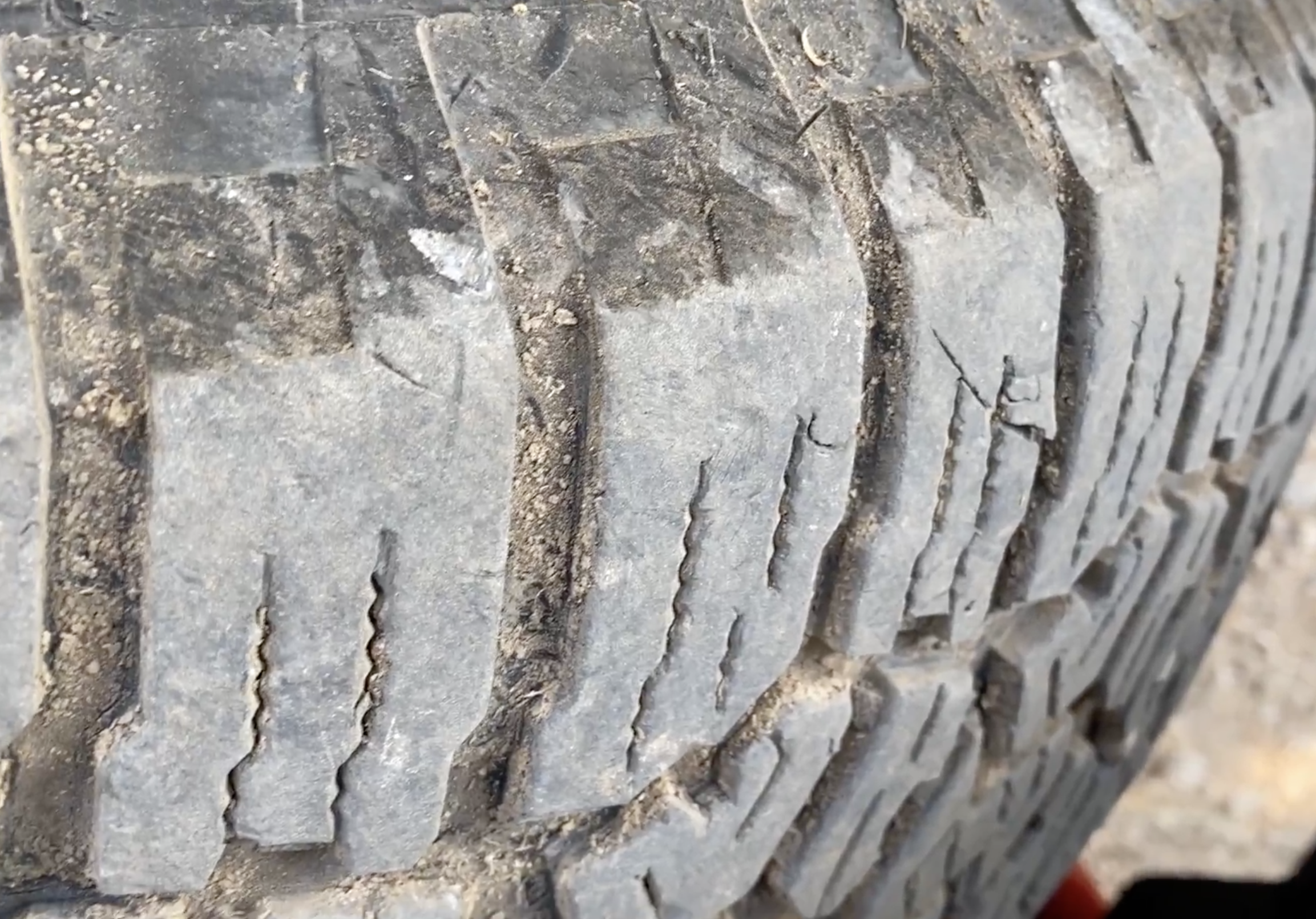
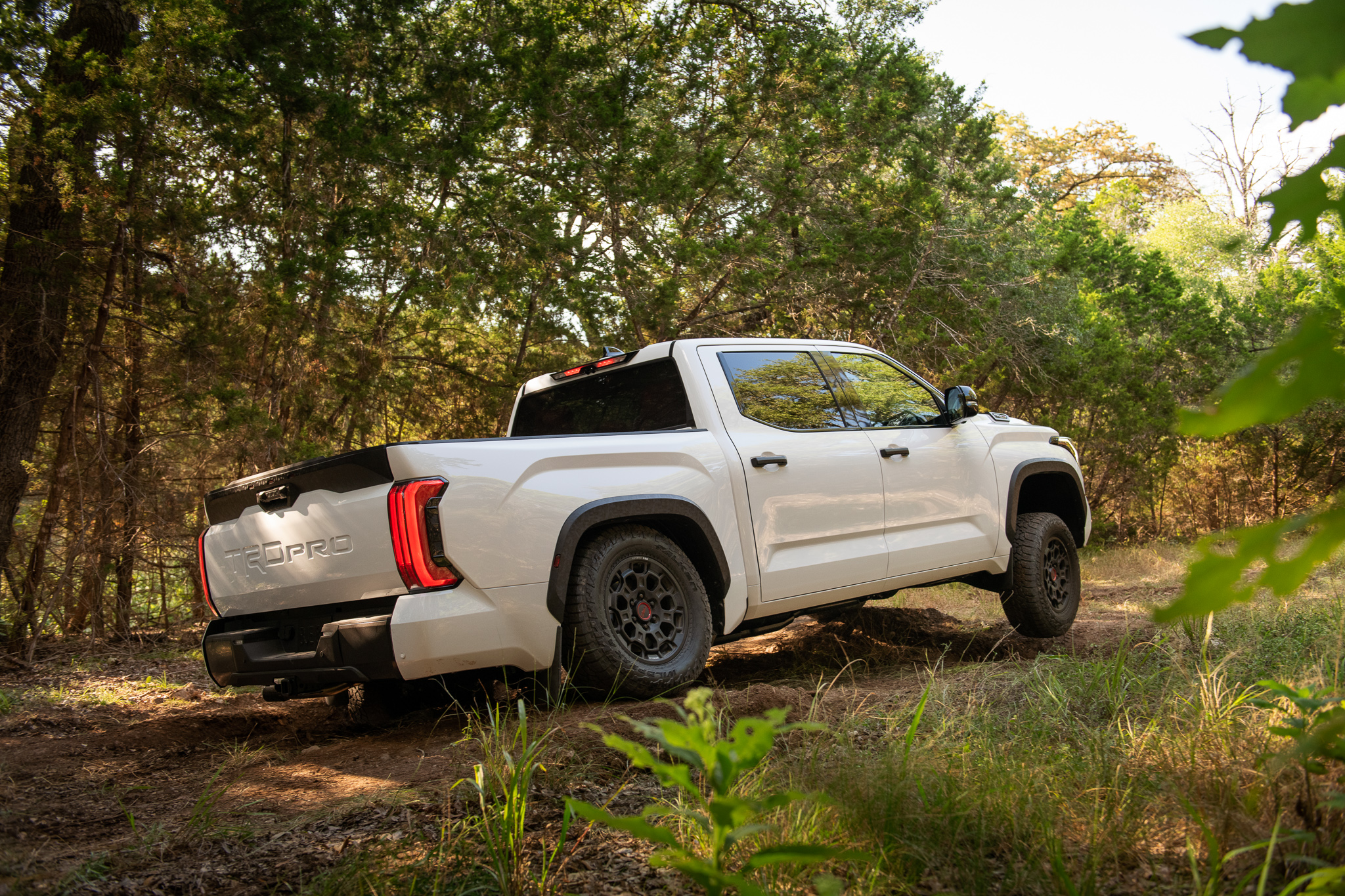
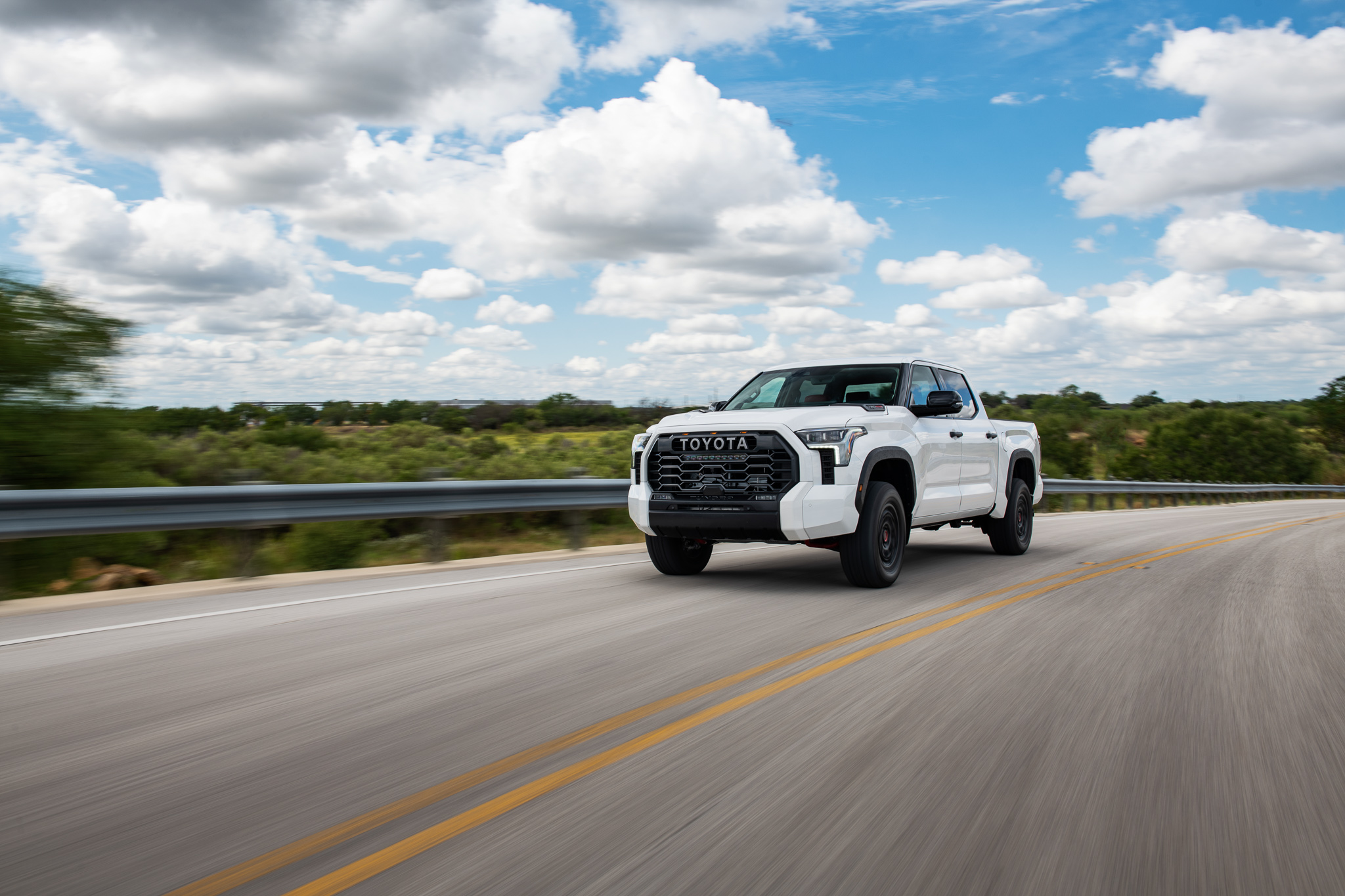 Once on the highway, the ride quality, power, and handling all comes together, making the 2022 Tundra both responsive and stable at speed. The roll center and anti-swaybar calibrations were properly tuned, providing a neutral and predictable chassis at the limits. Despite the improved handling, the ride is not busy or fatiguing. The steering has variable weighting, with a light feel on the trail and in parking lots, but a firmer and more direct weighting on the highway. The adaptive cruise control, and all of the other electronic packages worked well and improved overall comfort.
Once on the highway, the ride quality, power, and handling all comes together, making the 2022 Tundra both responsive and stable at speed. The roll center and anti-swaybar calibrations were properly tuned, providing a neutral and predictable chassis at the limits. Despite the improved handling, the ride is not busy or fatiguing. The steering has variable weighting, with a light feel on the trail and in parking lots, but a firmer and more direct weighting on the highway. The adaptive cruise control, and all of the other electronic packages worked well and improved overall comfort.
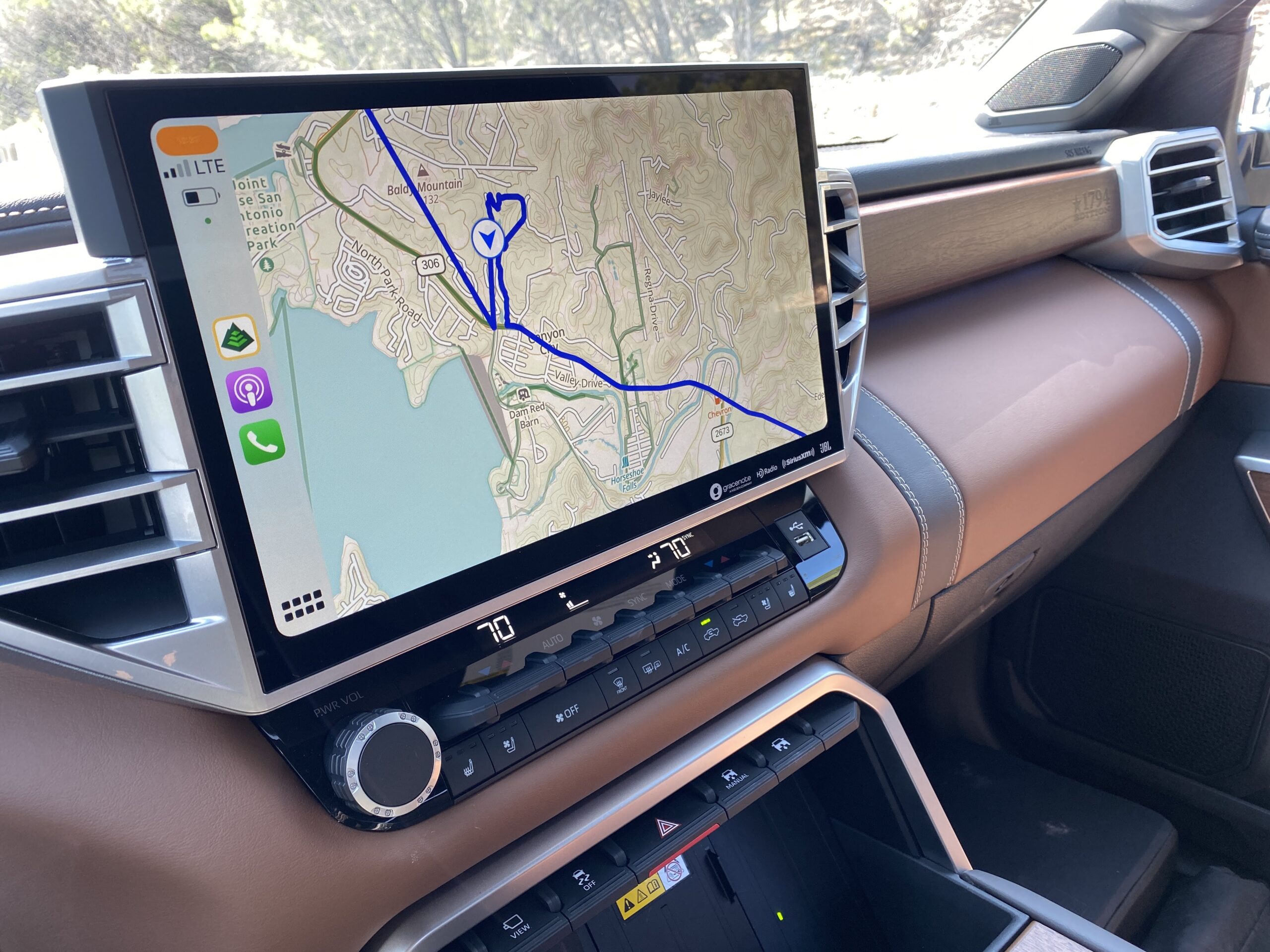
I never mind the electronic gadgets on a Toyota, as they always seem to be reliable for the long haul. In particular, I appreciated the 14″ display, when using Gaia GPS on Apple Car Play. It made navigating the highways and backroads easy, and will be a welcome feature during more remote adventures. The interior of the 1794 is particularly attractive, while I found the “red everywhere” of the TRD Pro a bit much for my taste. Overall, the interior is a nice place to spend time.

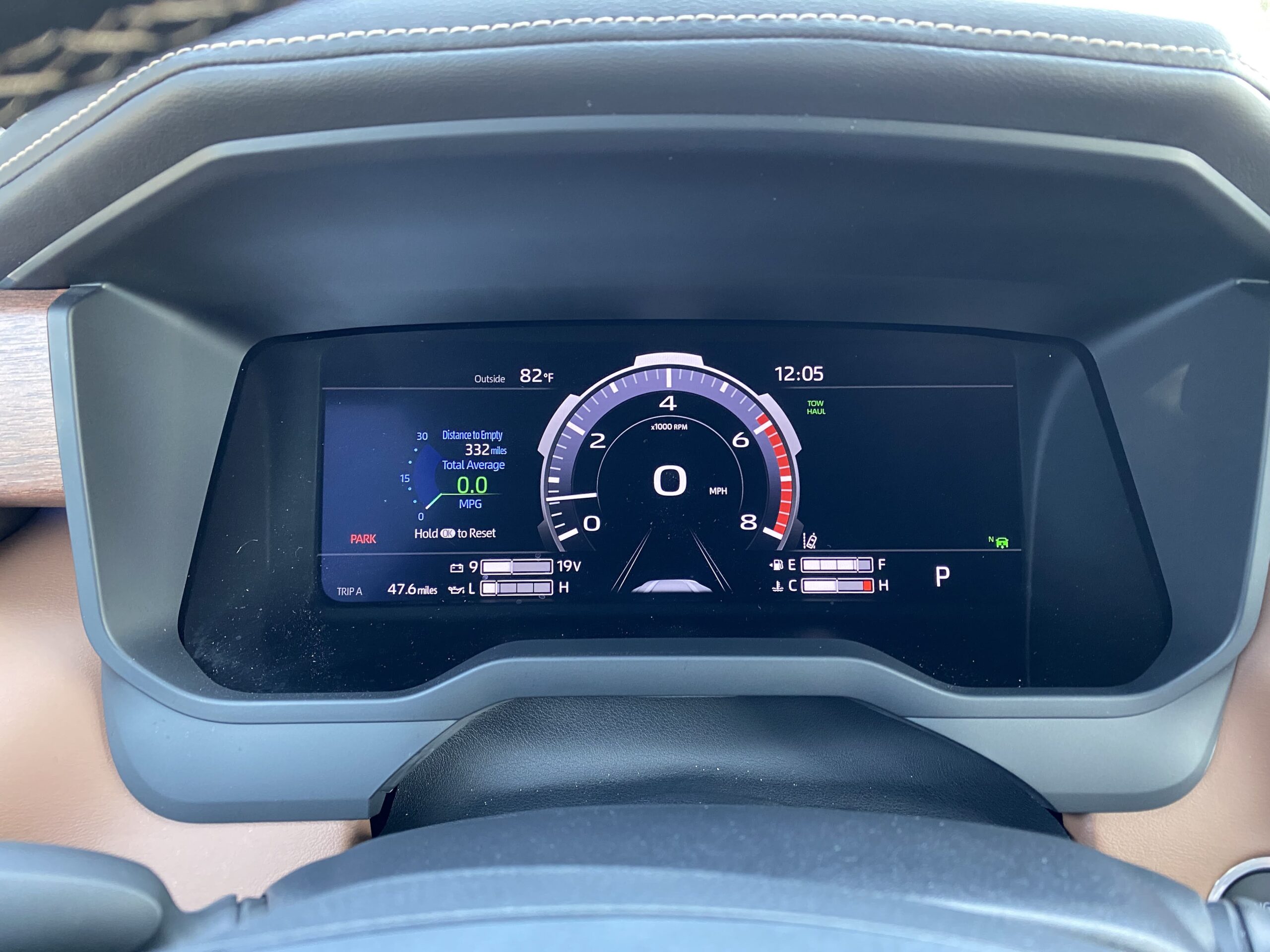
There is no question this is the most capable and overland ready Tundra yet.
toyota.com
Pros
Rear locking differential and multi-terrain select
Best handling truck in the test
Land Cruiser chassis and drivetrain (well, most of the drivetrain)
Cons
Less rear axle articulation than outgoing model
Lack of front or rear recovery points
Editor’s Preferred Configuration:
TRD Pro Double 4WD with TRD Off-Road package (provides an 1,810 payload)


